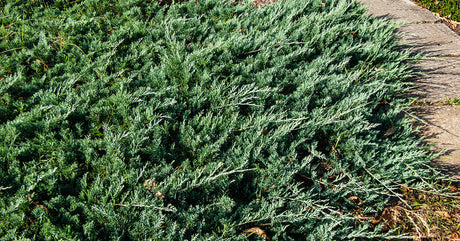

Planting Like a Pro with Purple Pixie Loropetalum
|
|
Time to read 3 min

|
|
Time to read 3 min
There are a lot of groundcover shrubs out there working every day and night to keep our landscapes looking fantastic, and I’m not sure they get the recognition they deserve. We’re talking about plants that play second fiddle to taller plants while selflessly making sure every inch of the landscape looks like a million bucks.
Let me get back on track here – Today, we will highlight one low-growing/groundcover shrub, particularly the Purple Pixie Loropetalum from the Southern Living Plant Collection. This is an exceptionally versatile plant; with just a little work, it can make some magic in your yard.
Acidifying fertilizer (NPK 10-8-8 or 10-8-6) can be used 2-3 times from Spring to late Summer to
promote plant health. Use less if planted in shadier conditions
Purple Pixie loropetalum has naturally weeping foliage, and at their max height of 2’, they tend to look sort of like a muffin top. This, coupled with the rich purple foliage, allows for some unique opportunities in the landscape.
They need about 5-6 hrs of sun every day for optimal health and prefer to have that sun in the morning rather than in the afternoon. The intensity of the afternoon sun can potentially be too much for them.
Purple Pixie loropetalum are particularly susceptible to root rot when overwatered. Be sure that your soil drains well before planting Loropetalums. If water drains from the hole intended for your plant in 10 minutes or less, it drains well. If it takes over an hour for the water to drain, you need to improve soil drainage. There are many techniques to combat this, but here are a few ideas. You can dig a larger hole (or the entire bed) and lay a few inches of gravel. You can dig a deeper/wider hole and add organic matter such as compost or peat moss. Or you can create a raised bed.
Purple Pixie Loropetalum works quite well as mass plantings; plant them between 2-3’ apart for a royal purple sea of weeping foliage. This strategy functions just as well, if not better, on slopes. They’ll prevent erosion while also adding evergreen interest. Also, initial spring blooms will coat these shrubs and create quite a display.
Re-bloom it…
Try planting them in front of multi-season bloomers like Encore Azaleas or Knock Out Roses for a continuously spectacular arrangement. The Purple Pixie will provide a unique frame for the Encores or Knock Outs as they continuously re-bloom from Spring to Fall. Lighter blooming varieties will allow for the greatest contrast. As a bonus, the Purple Pixie will re-bloom sporadically through fall.
Consider it Contained…
Finally, Purple Pixies truly shine in container plantings. Cascading over the lip of pots/walls is second nature to these Loropetalums. Just remember to “Thrill, Fill, and Spill.” If you’re unfamiliar with this aspect of container theory, here’s a quick rundown.
Wrapping up…
Hopefully, this has given you some ideas and tips on using Purple Pixie Loropetalum in your landscapes. If you have any further questions, feel free to Contact Us here at PlantsbyMail.com and we will get back with you as soon as possible. Thanks for reading!






PBM Team |